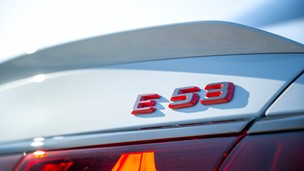Polestar is a Swedish race team that is not part of Volvo but has worked with nobody else since it was founded in 1996. The manufacturer quite rightly holds it in very high esteem, and has commissioned it to build several concept cars and a modified version of the S60 which was sold only in Australia.The association has become stronger with the introduction of the V60 Polestar, which is being offered only here and in Sweden, the USA, Canada, the Netherlands, Japan and Switzerland. There's also an S60 saloon, which is mechanically identical though fractionally quicker, but Volvo's UK operation reckoned that its customers would be far more interested in the estate, so that's all we're getting.Despite this restriction, a disproportionately high 125 cars are being imported here from a total production run (unless plans are revised due to high demand) of 750.The donor car, if that's not too dismissive a term for it, is the high-specification V60 R-Design Lux Nav, fitted in this case with a large number of what would normally be optional extras including Driver Support, a sunroof, Volvo's On Call system and a Harman Kardon premium sound system.At 1843kg it's pretty heavy, but that's partly compensated for by the fact that the three-litre six-cylinder twin-turbo T6 petrol engine has been uprated to produce a maximum of 345bhp. That's achieved at 5250rpm, and although the rev limiter kicks in at 6500 the six-speed automatic transmission makes upshifts at around 6000, and 211bhp is already available at half that speed.This is not a peaky engine, then. It's a very nice sounding one, though, thanks to an exhaust system which is already quite rorty (though not unbearably loud) at most speeds and becomes rortier when the engine goes above 4000rpm and the transmission is in Sport mode.The hardware of the automatic box, supplied by Japanese company Aisin, is untouched (so it's obviously quite sturdy) but Polestar has worked on its management, making faster shifts possible and preventing shifts from happening at all, unless the driver asks for one, when the car is in a corner, the idea there being to limit the possibility of the car becoming unstable.The brakes are by Brembo and are golly-gosh good - certainly better than you need them to be unless you're trying to lower your time on a test track by another couple of tenths. Polestar has also worked on the aerodynamics, reporting that there is actual downforce rather than lift at both ends. The four-wheel drive system has been modified so that there's a rear-axle bias at speeds of right up to 106mph.There has also been some jazzing-up of the interior, but I hope you'll forgive me if I gloss over that and get on to the really interesting bit, which is the suspension. Now, perhaps you think that a race team, given the opportunity to convert a standard road car into something a bit more sporty, would make it almost undriveable and certainly close to unbearable for anyone other than the most ardent speed freak.Well, it doesn't work that way. What race teams actually want to do, in the context of chassis work, is present as much of all four tyres to the ground as they can in all conditions. They will alter this policy only if constrained by regulations, or if a lack of grip from one or more of the tyres contributes to the greater good of the overalls set-up. On a four-wheel drive road car, this is unlikely to be the case.What Polestar has attempted to do is make the V60 grip well in a very wide range of road conditions - far wider than the team would ever have to deal with on a race circuit. And, on the whole, it has done a superb job.On public highways there is no sense that the engine producing more power than the chassis can deal with, and although Volvo has taken pains to assure people that this is not meant to be a track car, it actually felt very impressive on a damp surface at Dunsfold Aerodrome (where cars, reasonably priced and otherwise, are filmed for the

Our Rating



